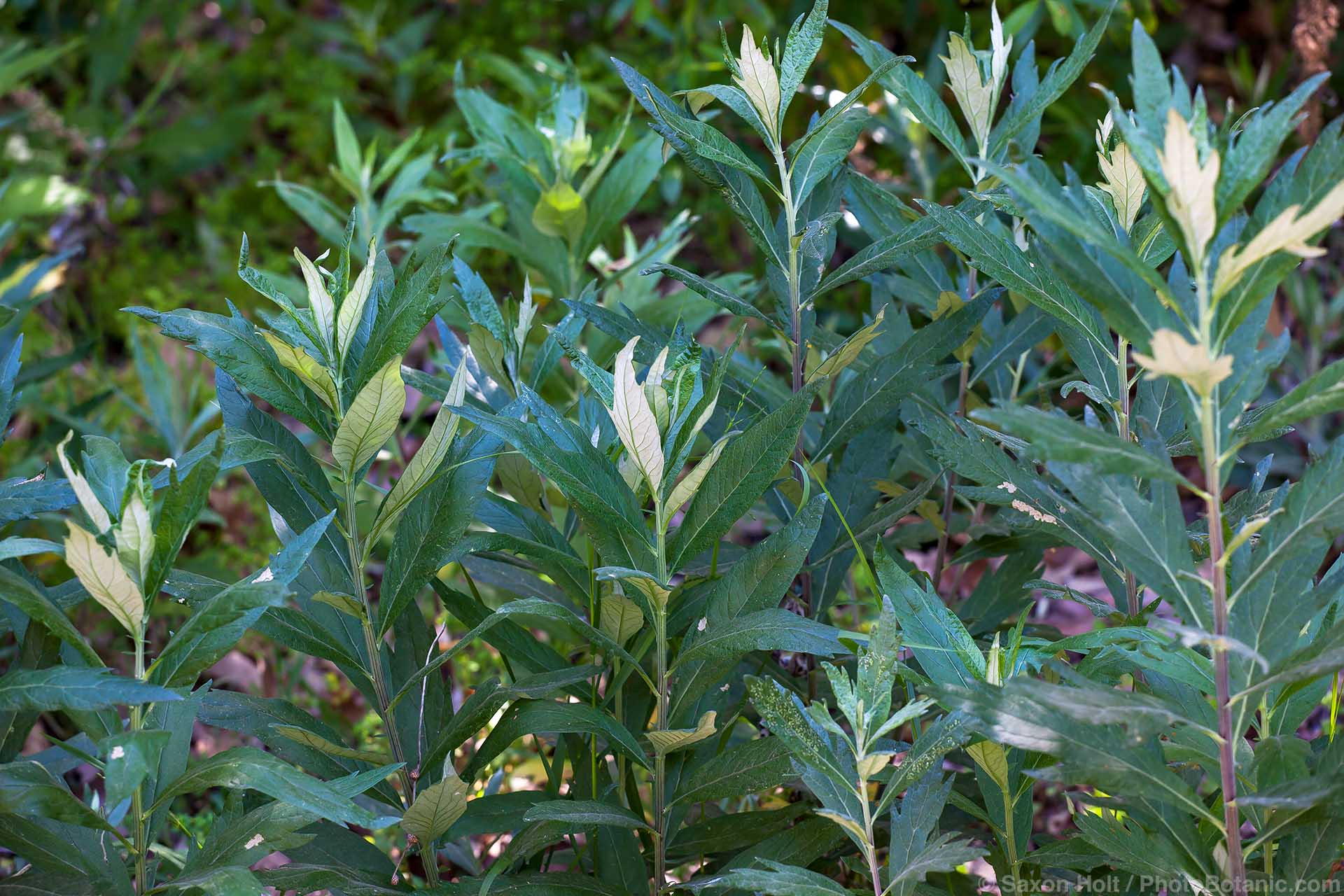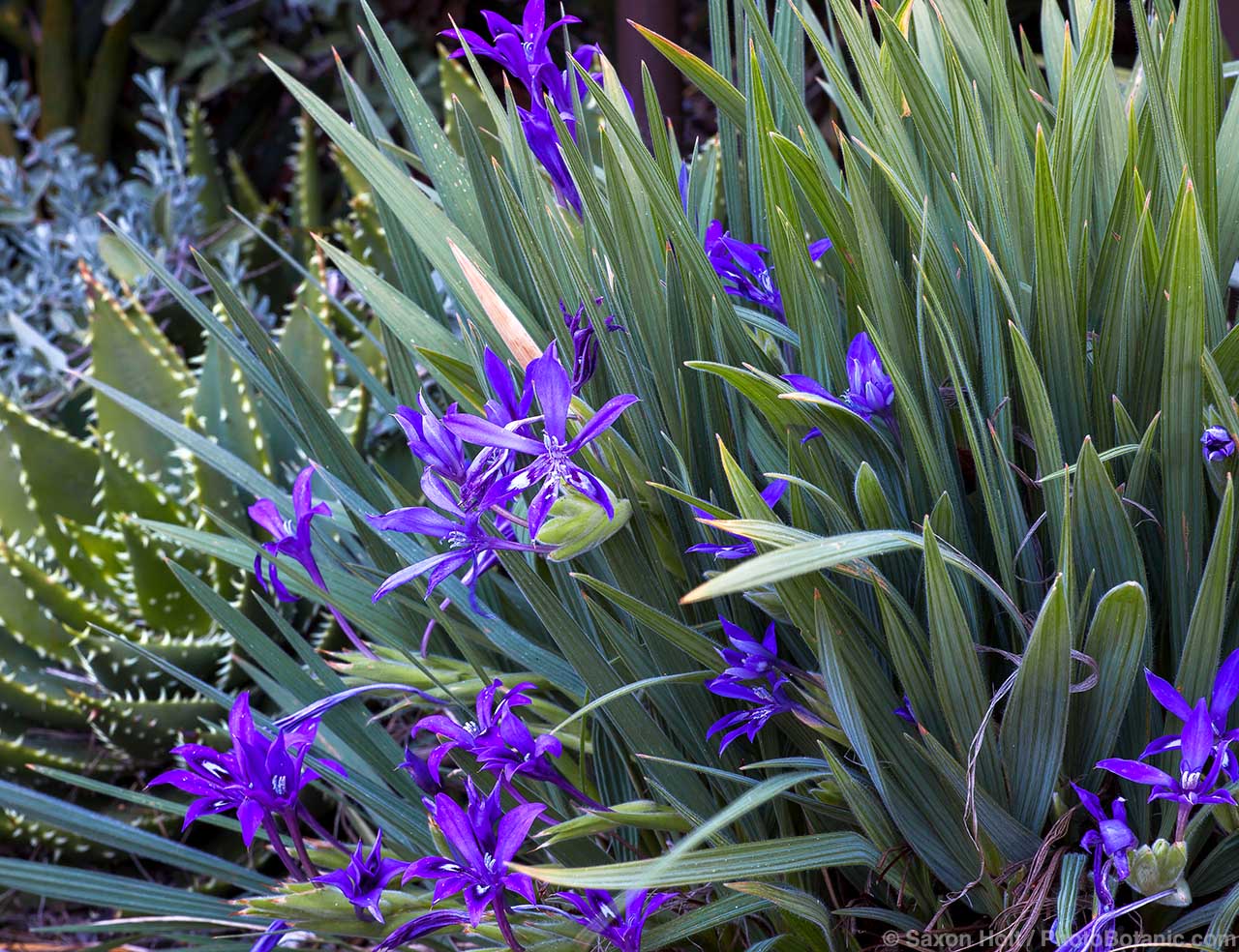Lotus hirsutus
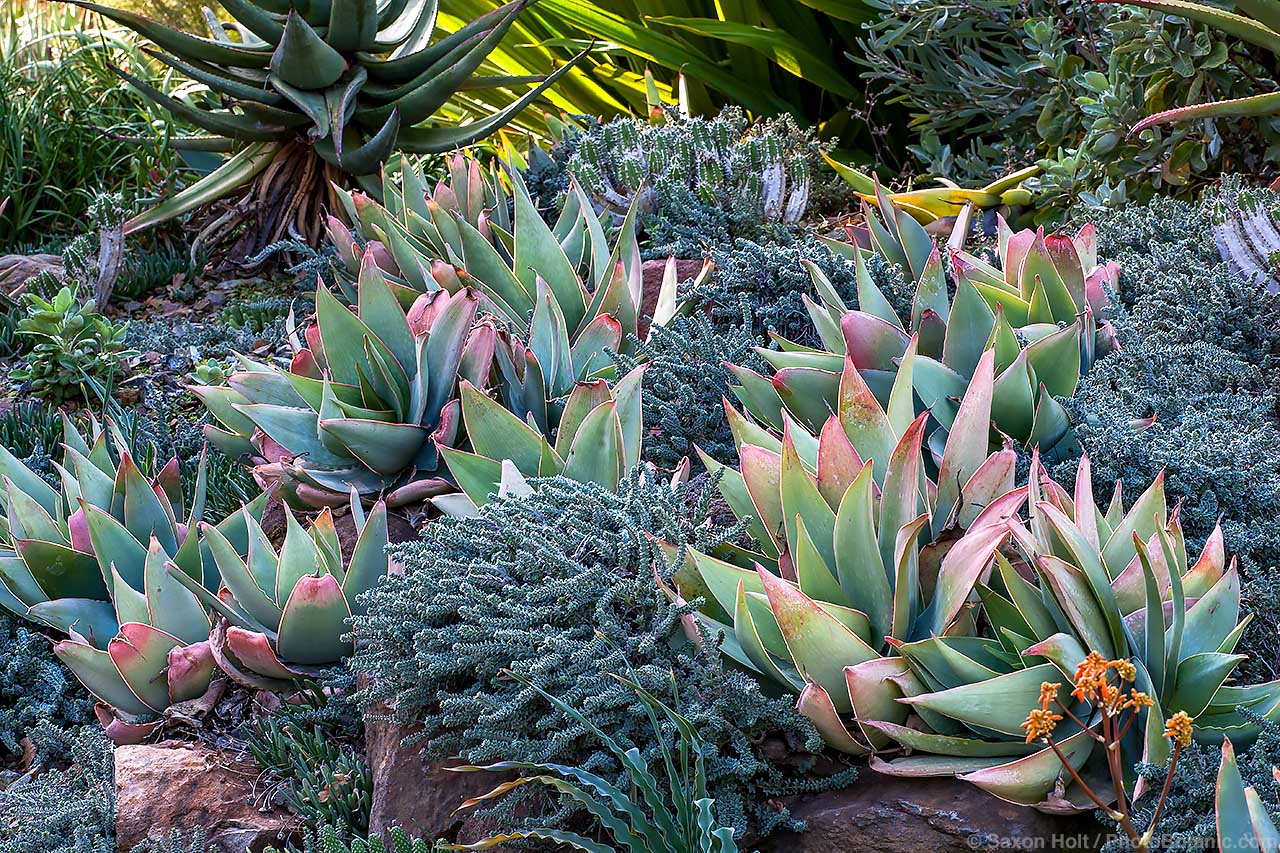
Share This!
Most longtime gardeners know this low, velvety, gray-leaved subshrub as Dorycnium hirsutum, by which name it is still often referenced today. Described by Linnaeus as Lotus hirsutus, it was recently returned to that genus, but the name change has been slow to receive wide acceptance.
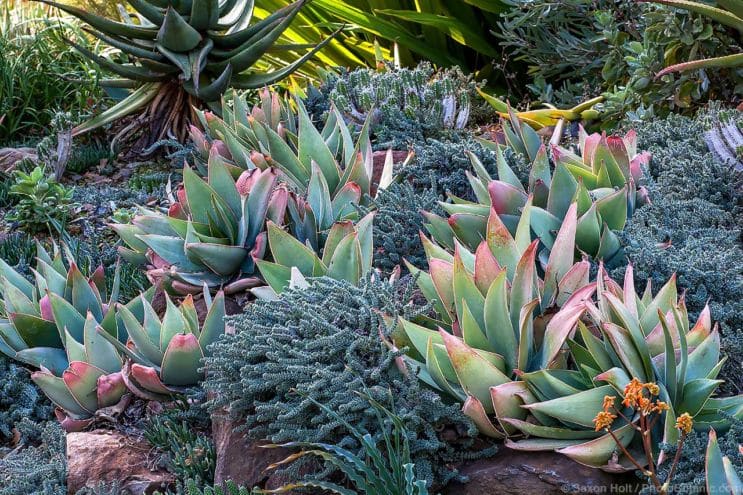
Lotus hirsutus (Dorycnium hirsutum) with Aloe striata in Ruth Bancroft Garden
Assuming that the plants I’ve seen and grown over the years are all the same species, Lotus hirsutus seems to be quite variable. The plants in my garden today are mostly upright and mounding, two feet tall and three to four feet wide with silvery gray-white leaves. At other times and in other places plants may be lower, more compact, with smaller, more closely spaced, darker gray-green leaves.
Whatever their form and leaf color, all bear masses of tiny, white pea flowers held in inch-wide clusters resembling those of clover. Summer flowers are followed by small, glossy, precisely arranged, maroon seedpods.
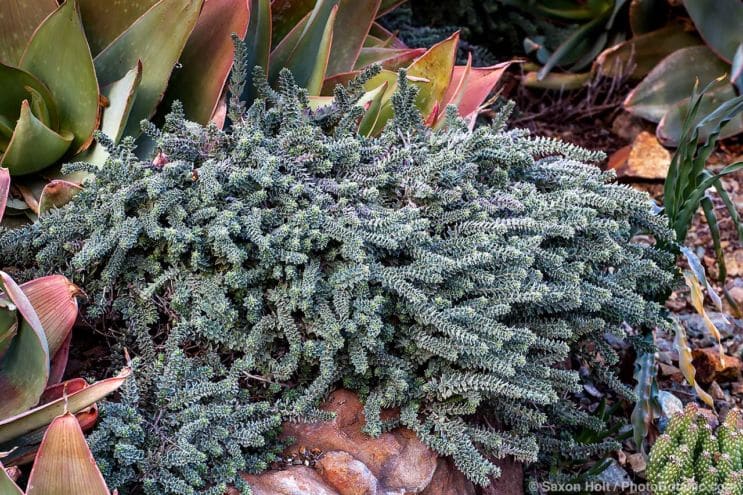
Plants in Ruth Bancroft Garden are low and sprawling with closely spaced leaves.
Native to the Mediterranean region from Portugal to Turkey, Lotus hirsutus blends well with other plants from summer-dry climates, wending its way over, under, and around its neighbors as if designed to do so. The perfect foil for larger-leaved plants, it looks good year round with almost no summer water. Deer ignore it, and bees love the flowers.
Lotus hirsutus is best near the coast in full sun, but does fine inland with a little summer water. Excellent drainage and fairly mild winters seem to be the only requirements.
Once common in nurseries and garden centers, this plant is mysteriously out of stock these days. Fortunately, it is easy from both seed and stem cuttings — a good pass-along plant when commercial stock is unavailable.
Share This!
Related Articles
By: Nora Harlow
By: Nora Harlow
By: Nora Harlow



